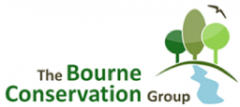
During the recent regional and national Farnham-in Bloom judging it was quite obvious that the new planting of the herbaceous border in the Middle Bourne Lane Wildlife Garden was amply fulfilling the objective of attracting pollinators. On a sunny day it hums with bumblebees, honey bees, hoverflies, greenbottles and even the odd hornet. The plants that was most effective in attracting insects were the tall clumps of giant Hyssop – Agastache ‘Blackadder’. While we were working preparing the Garden for the national judges Martin Angel counted four species of butterfly visiting its dark blue flowers, and at night there were seven species of moth feeding on the flowers (large yellow underwings, lesser broad bordered yellow underwings, yellow shell, angle shades, the micromoth Blastobasis adustella, brimstone moths, and Udea prunalis). Yet surprisingly this plant does not feature in the lists of plants that attract pollinators published on the web by the RHS and RSPB.
